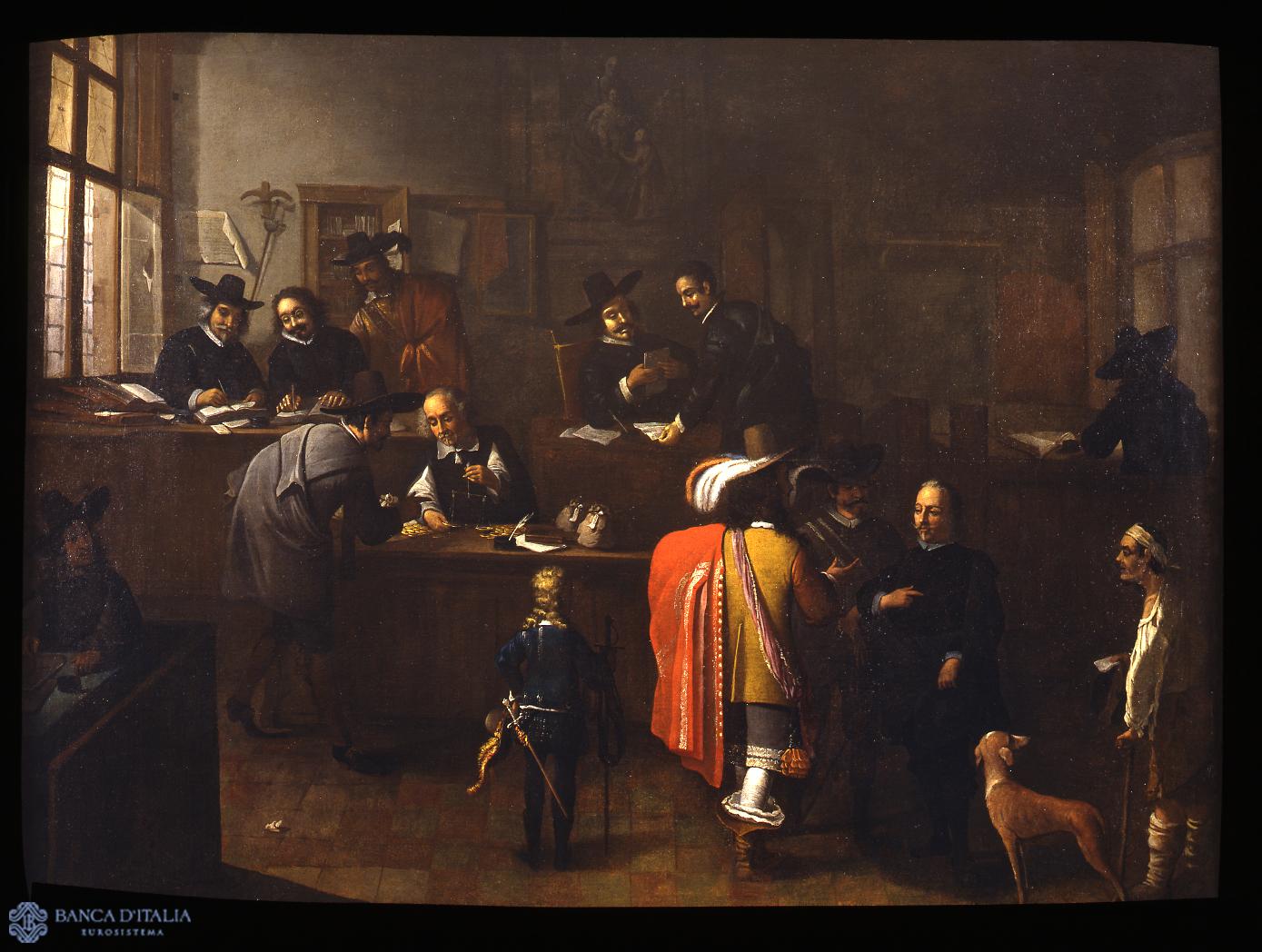The group of 17th-century paintings conserved in Palazzo Koch and other buildings of the Bank of Italy are of considerable interest, as they are representative of several artists and schools of the time. A youthful work of Claude Vignon provides an important example of Caravaggism, the first movement of European significance, which originated in Rome inspired by the artist’s work. As is apparent from the work of the French painter, Caravaggio’s revolutionary style attracted the attention of many artists from France working in the city. The Finding of Moses by Salvator Rosa instead offers a chance to admire the mature work of one of the great protagonists of 17th-century Italian art, a contemporary of the group of painters known as the Bamboccianti. These were genre painters who drew inspiration from Pieter van Laer, known as Il Bamboccio, reproducing similar scenes in their work. It was van Laer who brought to Italy the Flemish and Dutch tradition of depicting scenes of daily life, and the large following he acquired included the Roman painter Michelangelo Cerquozzi and the Dutch artist Jan Miel, whose works reflect his influence.
Acis and Galatea by Giuseppe Diamantini leads us to the revival of classicism, initiated by the Carracci brothers from Bologna, which dominated the second half of the 17th century. The poetry and rhetoric of the Baroque style are instead embodied in a painting by Ciro Ferri, Pietro da Cortona’s most loyal pupil, and in the works of Vincenzo Malò and Antonio Zanchi. A comparison of these paintings highlights the multitude of pictorial languages that coexisted in various locations in Italy at the time.
The largest group of works owned by the Bank of Italy consists of landscapes. The two paintings by Jean Lemaire, who was close to the powerful Barberini family, show the influence of the paintings executed in Rome by Nicolas Poussin. The works by Viviano Codazzi introduce a new method of incorporating architectural views in real urban settings, one that differs from the French master’s archaeological reconstructions. Poussin’s style had a decisive influence also on the work of Gaspard Dughet and the other vedutisti of the classical school. These include Jean François Millet and Crescenzio Onofri, famous for their carefully constructed and balanced landscapes, which paved the way for the Arcadian vedute of the 18th century and found expression in the idyllic pastoral scenes of the German painter Philip Peter Roos, known as Rosa da Tivoli.
The two works by Johannes Lingelbach, clearly reflecting the genre painting of the Bamboccianti, are set in imaginary landscapes, but nonetheless credible and coherent. Similarly, the views painted by Alessandro Salucci show scenes of everyday life unfolding in a vast architectural setting with monuments of ancient and modern Rome.
Il Seicento
The 17th Century
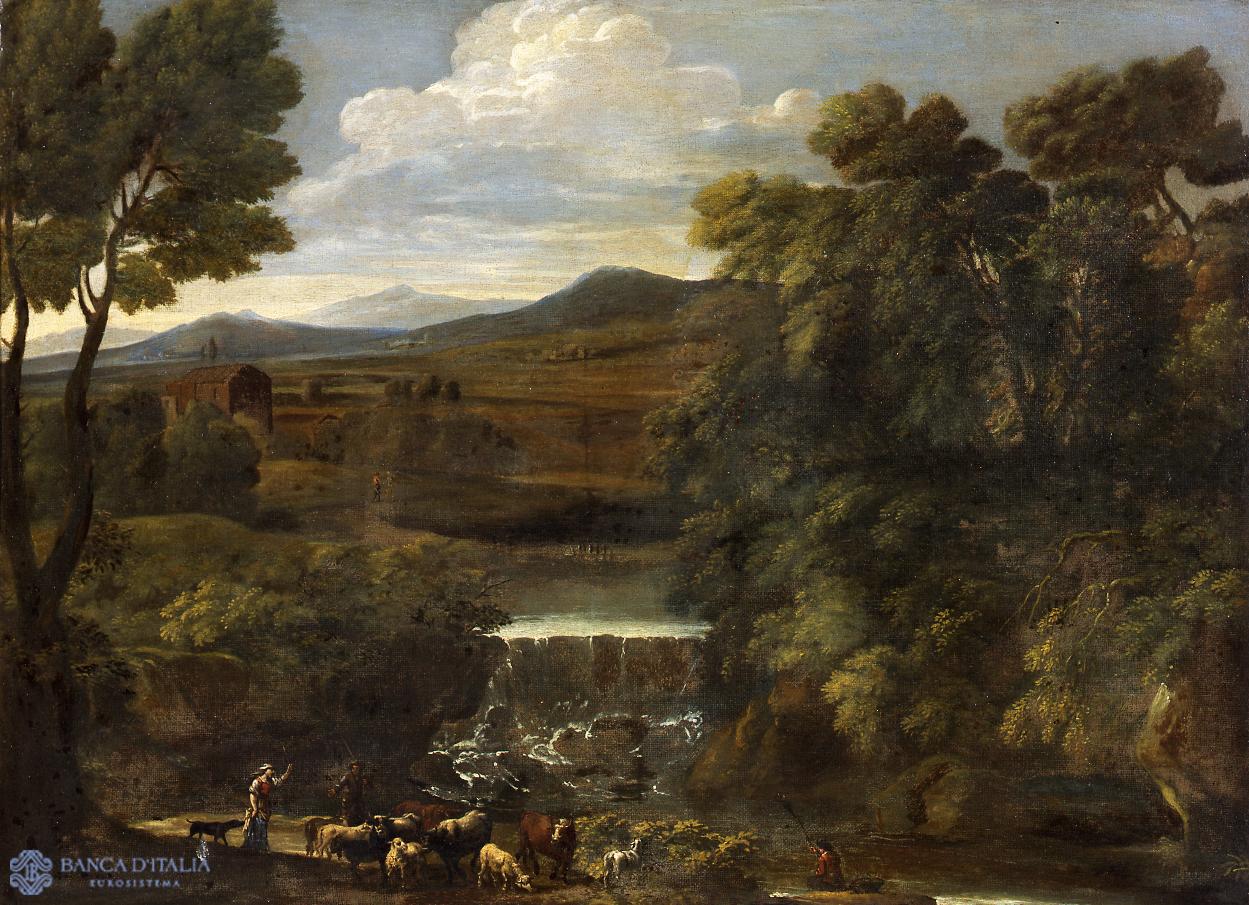
Works of art
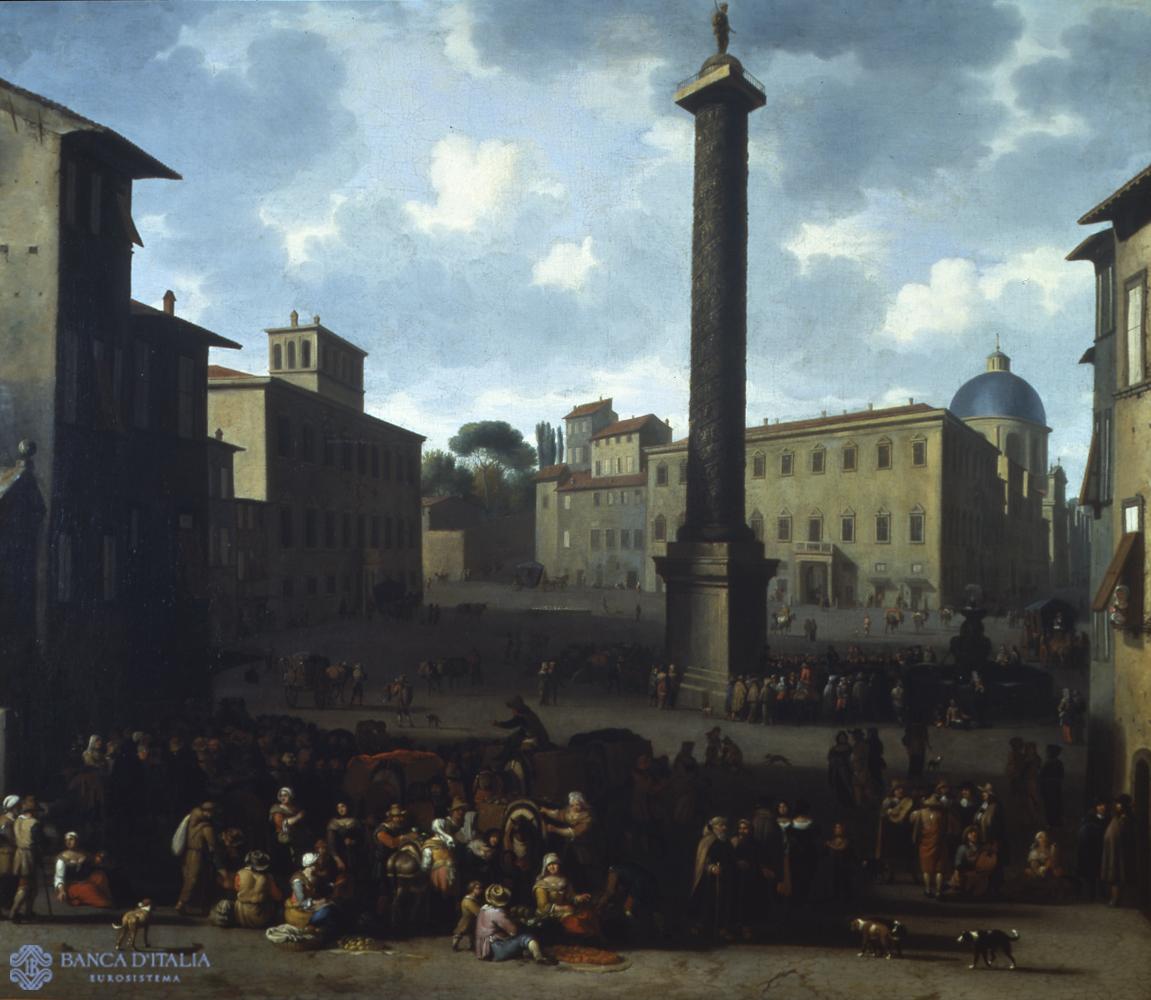
View of Piazza Colonna
In the picturesque setting of Piazza Colonna in Rome, van Huchtenburg depicts a market with numerous small figures captured in various informal poses. The subject, which is typical of a widespread genre of painting, is also an excuse to depict the square around the tall column that was erected there in the second century AD to celebrate the achievements of Marcus Aurelius.
Painting
17th century AD
Landscape
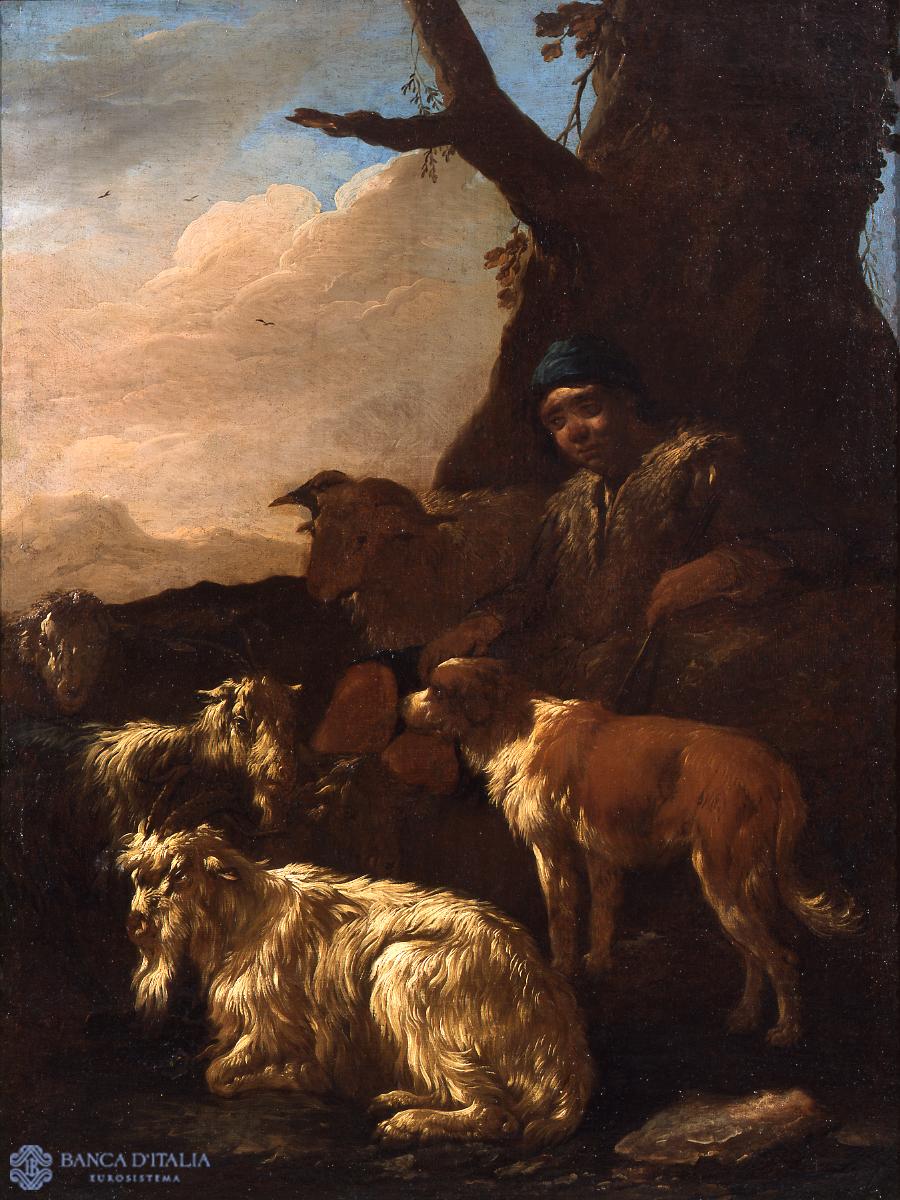
Shepherd with Animals
The size and subject of this painting are the same as those of its companion, creating a harmonious complement to it. This is clear from the identical shades of colour used and the composition of the two scenes, which are intended to form two parts of a same view.
Painting
17th century AD
Figurative
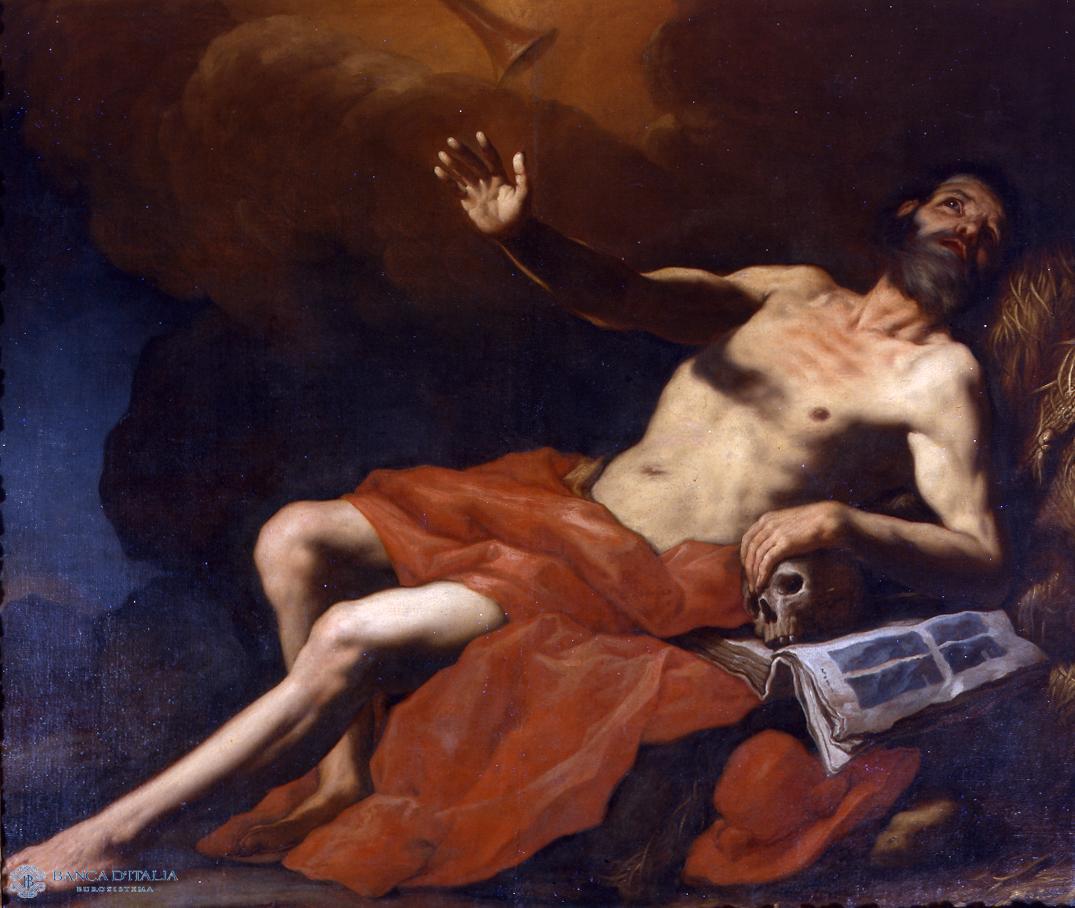
Saint Jerome
The painting narrates a strange episode in the life of St. Jerome: according to legend, the elderly Doctor of the Church was visited by an angel who announced his imminent death. Unlike Guercino and other artists who treated the same subject, Zanchi does not depict God’s messenger, only his trumpet, visible at the top of the painting.
Painting
17th century AD
Religious

Urban Landscape with Figures
In Codazzi’s completely imaginary landscape groups of figures are depicted in a square bordered on two sides by imposing constructions. On the left, behind columns supporting a balcony, an archway appears to give onto a side street. Beyond it, an elegant portico, supported by pairs of columns with Ionic capitals, projects into the square.
Painting
17th century AD
Landscape
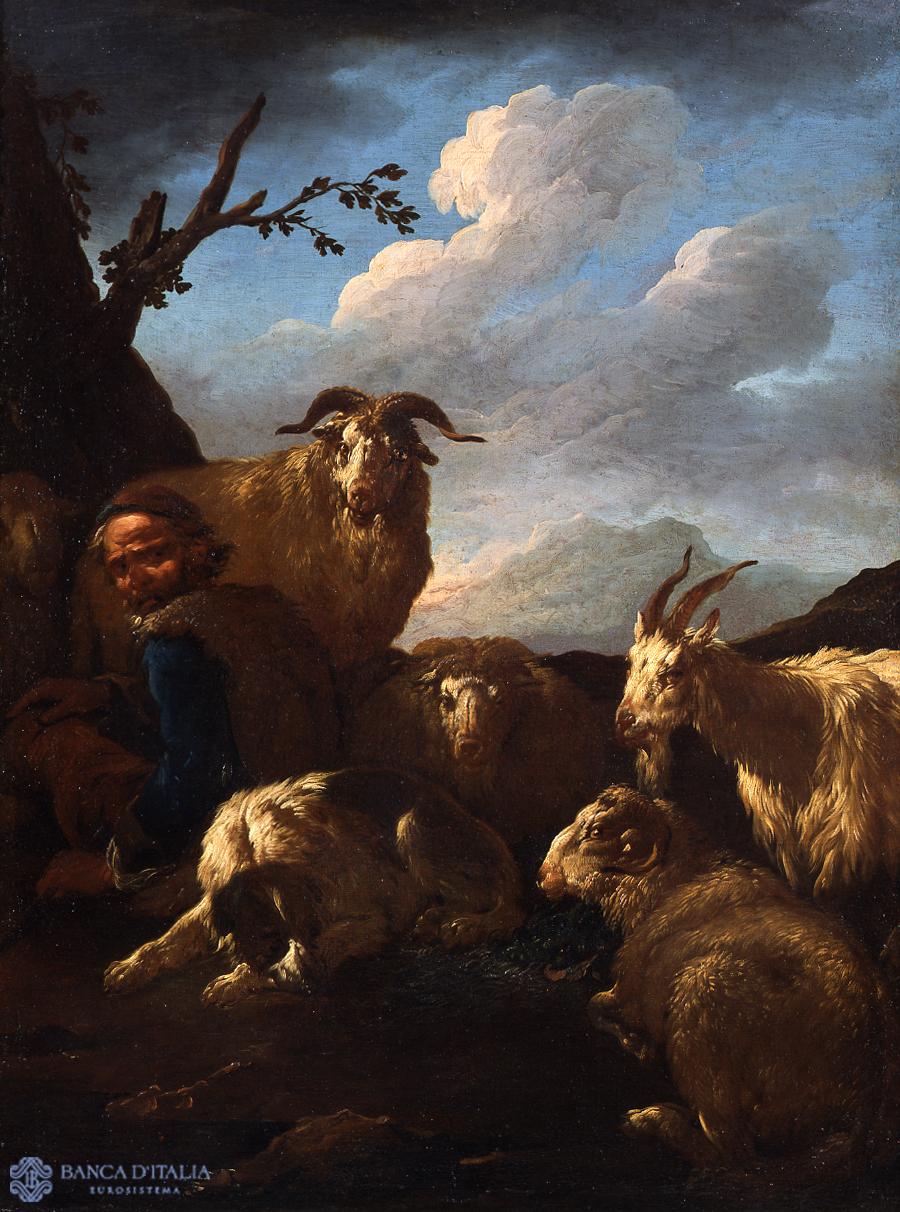
Shepherd with Animals
The animals are the true protagonists of Philipp Peter Roos’s paintings and in fact are often depicted almost in the form of portraits. The upper section of the canvas shows the sky at sunset and the outline of mountains, their colour blending with that of the clouds.
Painting
17th century AD
Figurative
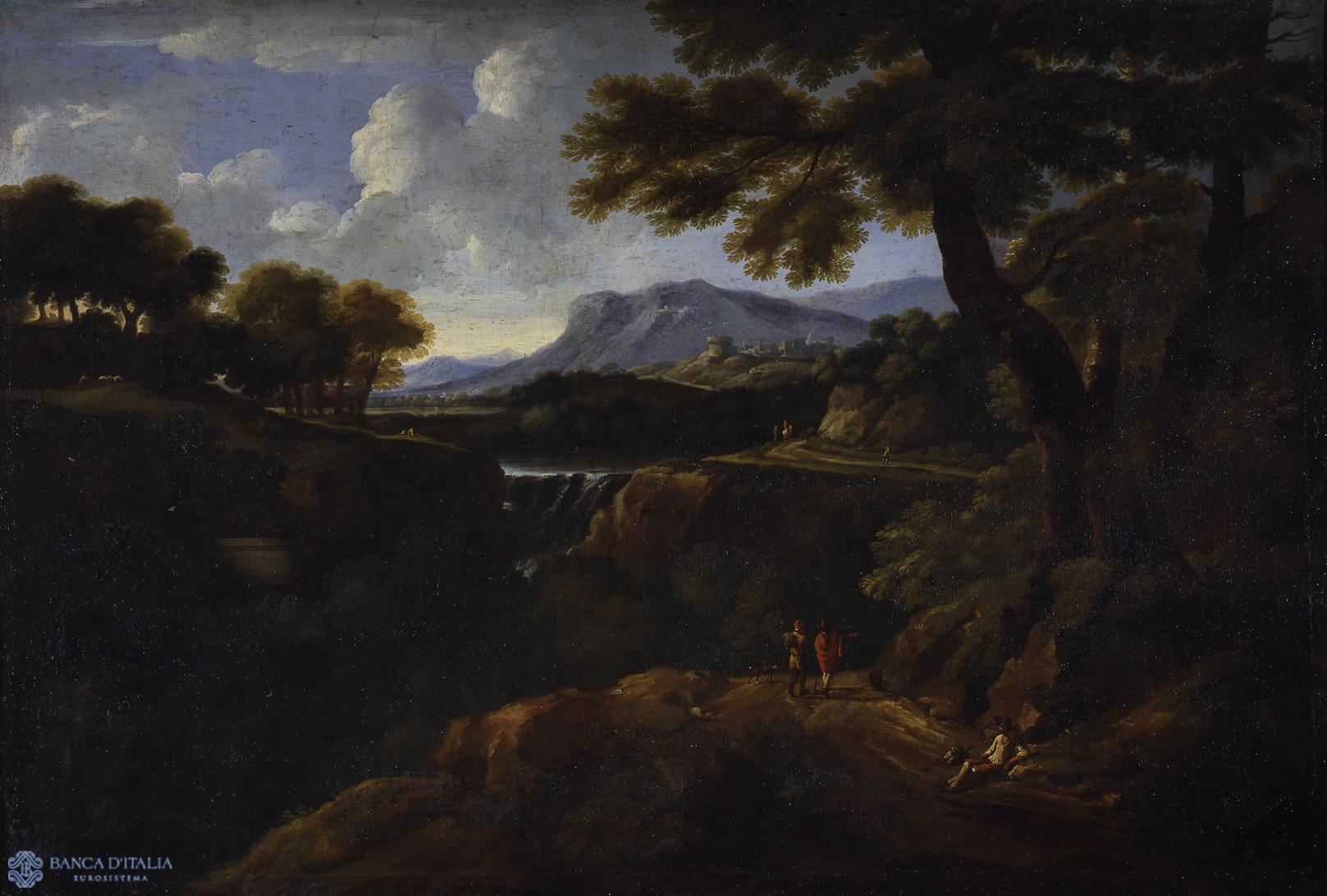
Paesaggio della campagna romana
The painting, dated towards the end of the seventeenth century, is of a wide landscape, an idealized depiction of the countryside around Rome. In the background a small town guarded by imposing towers and the outline of a mountain reminiscent of the Monte Soratte that overlooks the valley of the Tiber to the north of Rome.
Painting
17th century AD
Landscape

Massacre of the Innocents
The theme of the Massacre of the Innocents is merely an expedient, dear to Codazzi, that enables him to create a spectacular architectural composition. And, indeed, the figures in this episode from the Gospel do not crowd the scene but seem lost in it.
Painting
17th century AD
Biblical - Historical - Mythologic

Landscape with Meeting of Saint Anthony Abbot and Saint Paul the First Hermit
The oval canvas depicts one of the most famous episodes in the life of the Desert Fathers, the meeting between St. Anthony Abbot and Paul of Thebes, credited with being the first hermit monk. The subject allows the painter to create a huge and very intense landscape composition.
Painting
17th century AD
Landscape
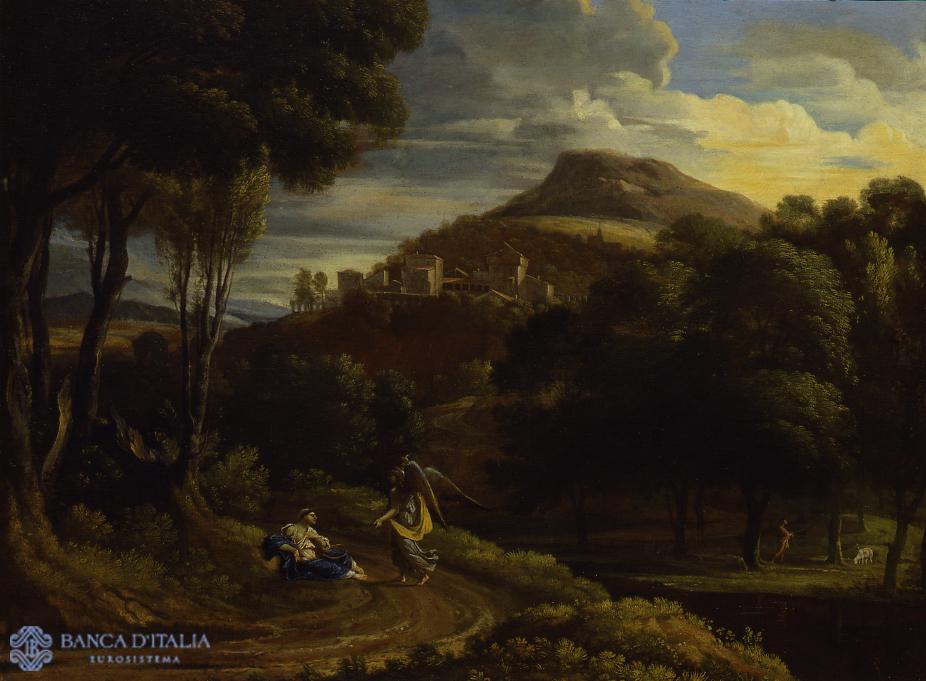
Landscape with Hagar and the Angel
The subject of the painting is taken from Chapter 21 of the Book of Genesis, which tells the story of Abraham’s slave-woman and her son Ishmael who are lost in the desert of Beersheba. Without food or water, they await death until an angel appears before Hagar announcing that she will have a great line of offspring.
Painting
17th century AD
Biblical - Historical - Mythologic

Landscape with Figures
The oval painting is of an unidentifiable religious subject. It probably depicts an episode from the lives of the saints, like its companion Landscape with Meeting of Saint Anthony Abbot and Saint Paul the First Hermit.
Painting
17th century AD
Landscape
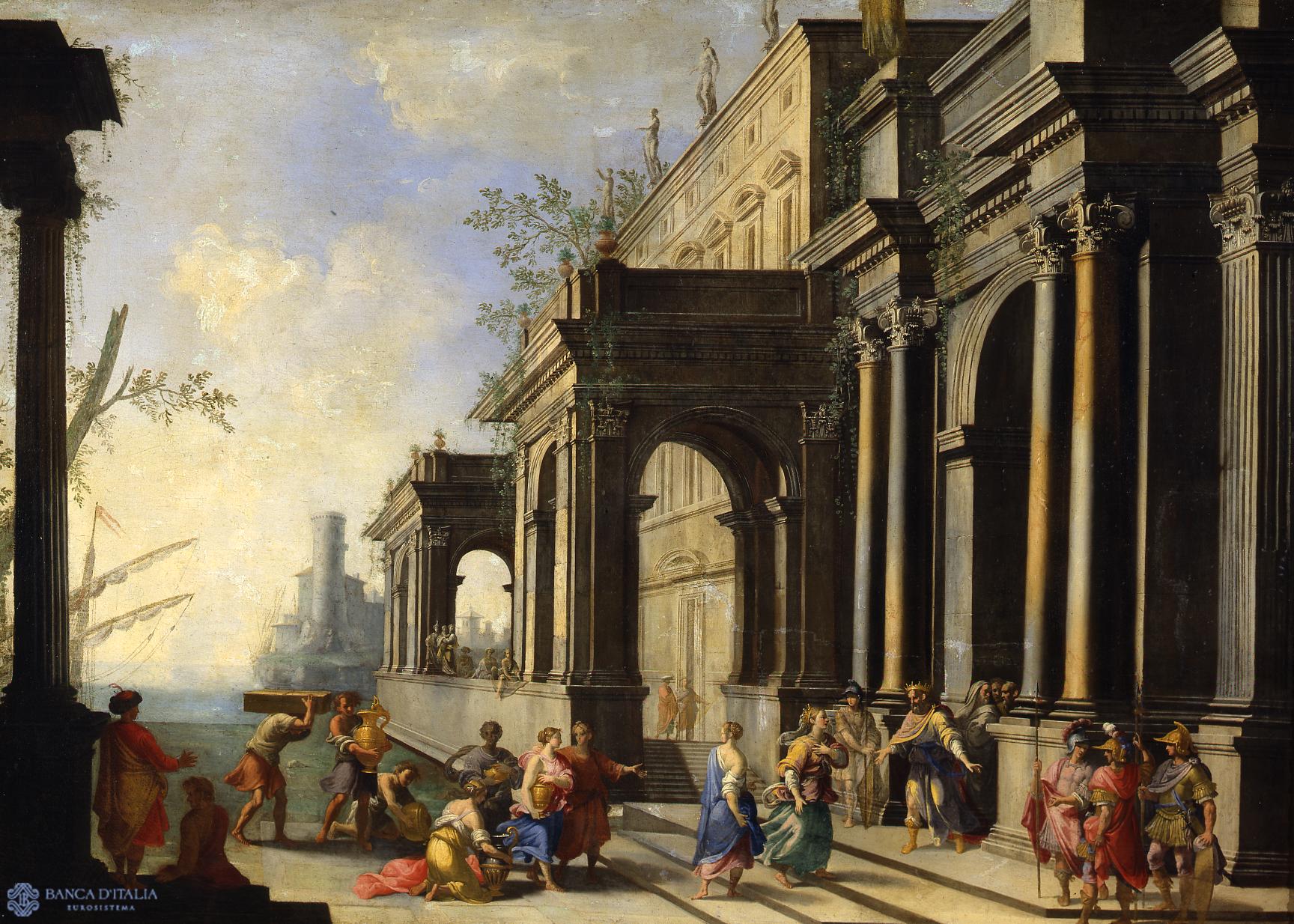
Meeting of Solomon and the Queen of Sheba
This is the companion painting to Esther Brought to the Palace of Ahasuerus and depicts another famous episode from the Old Testament. While Solomon was busy building the Temple in Jerusalem, the Queen of Sheba became so awed by the king’s fame and wisdom that she embarked on the long journey to pay him visit.
Painting
17th century AD
Biblical - Historical - Mythologic
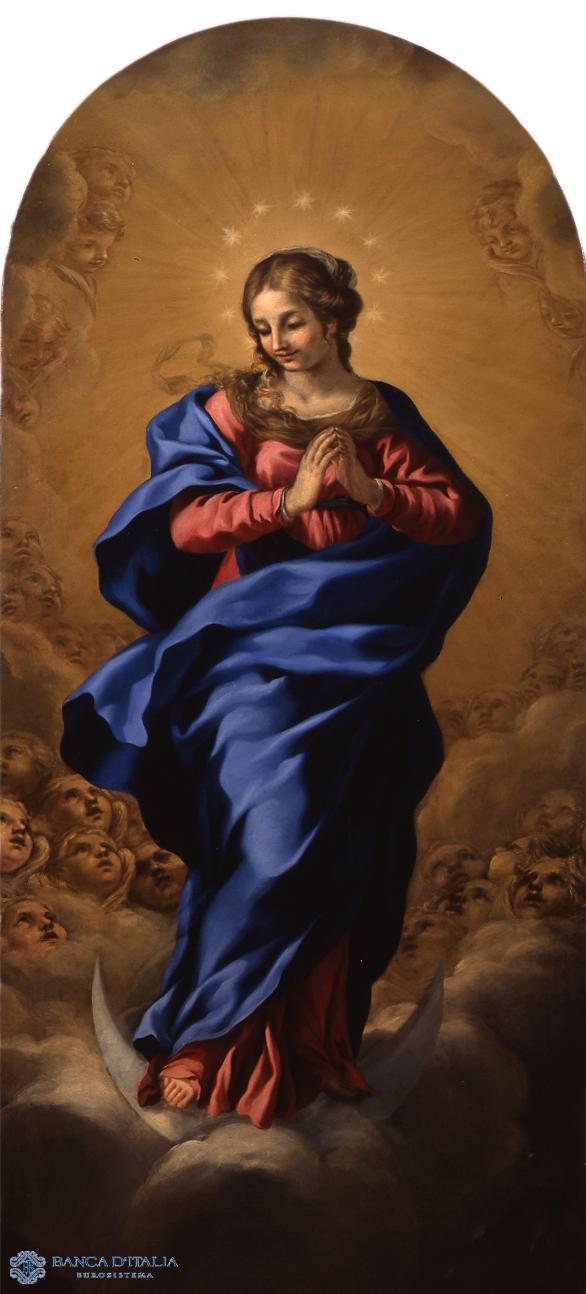
Immaculate Conception
The stately figure of the Virgin, wearing a blue cloak and red tunic, stands on a crescent of the moon surrounded by a paradise inhabited by cherub heads. This typical iconography of the Immaculate Conception became popular in the sixteenth century, long before Pope Pius IX proclaimed the dogma of Mary’s conception without original sin.
Painting
17th century AD
Religious
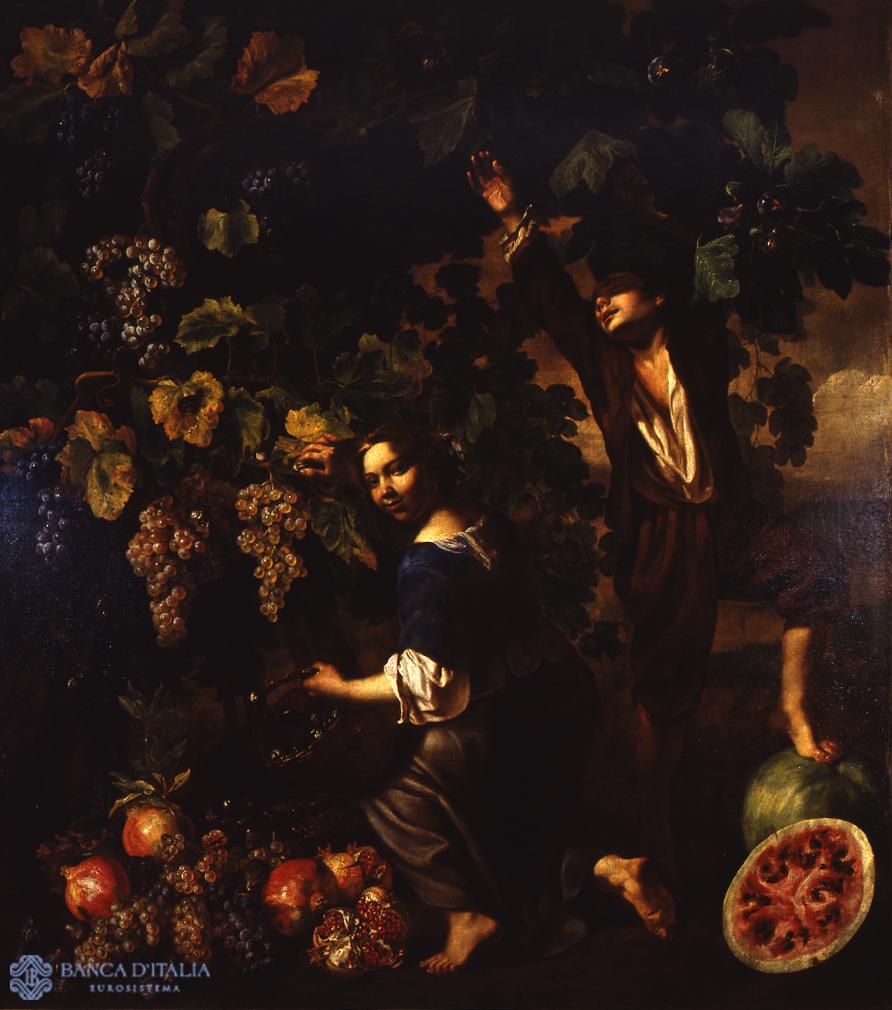
The Harvesting of Snails
This painting well illustrates Cerquozzi’s skilful rendering of natural subjects. Almost the whole of the canvas is covered with a grapevine and a fig tree, whose intertwined leafy branches are heavy with fruit.
Painting
17th century AD
Figurative
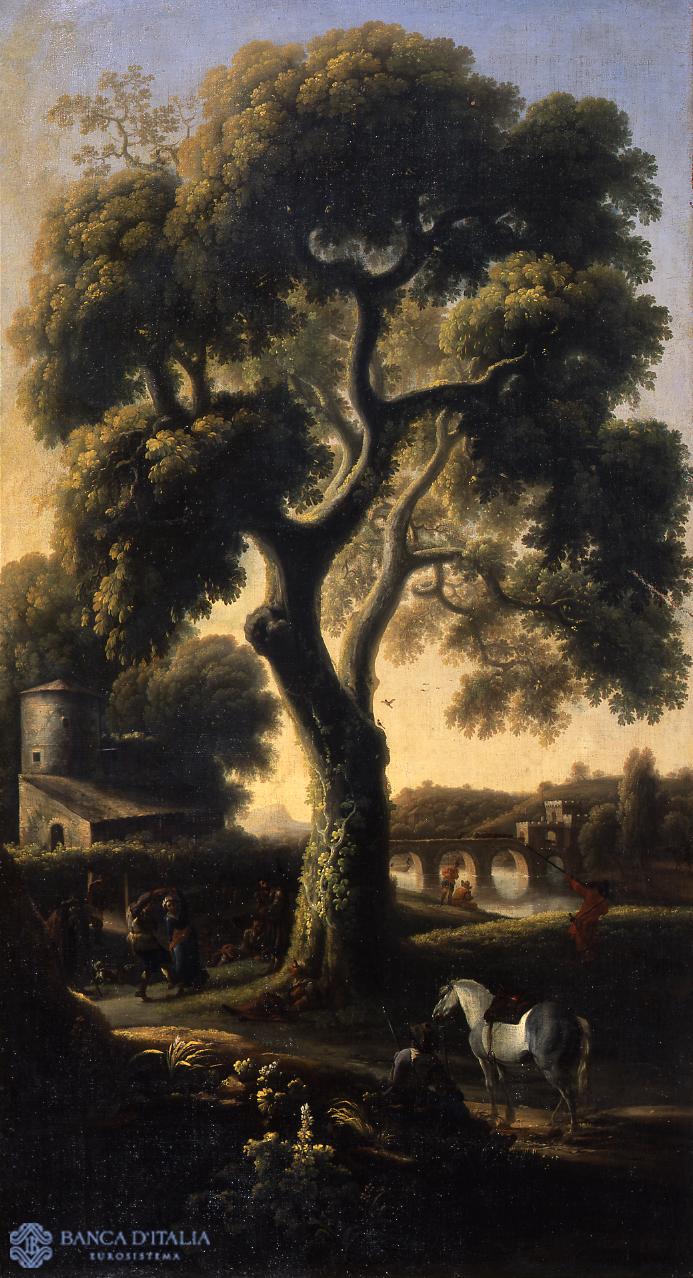
The Great Tree
The central element of the painting is, as the title suggests, a huge tree: probably, from the shape of the leaves, an oak or holly oak. In the foreground, a white horse stands on a dirt track while his rider sits on the ground next to him.
Painting
17th century AD
Landscape

Juno, Io and Argus
The painting tells the story of Argus. The fabled giant with a hundred eyes was placed by Juno, depicted at the centre of the canvas, to guard over the young Io, who had been seduced by Jupiter and turned into a white cow.
Painting
17th century AD
Biblical - Historical - Mythologic

The Four Fathers of the Latin Church
On the right-hand side of the canvas a bishop, probably St. Ambrose, is engrossed in reading a large book. On the opposite side, old St. Jerome is writing, partially enveloped in his usual cardinal’s cloak.
Painting
17th century AD
Religious
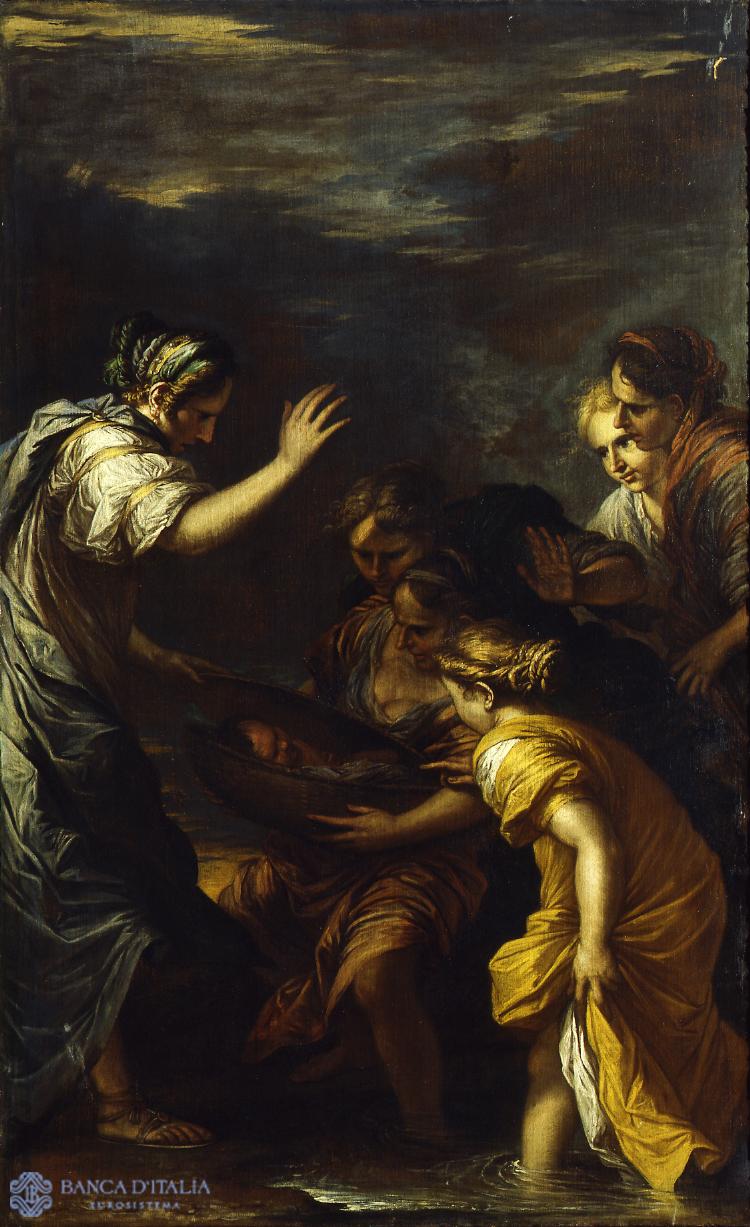
The Finding of Moses
The Finding of Moses is a subject that Rosa used on several occasions. The painting in the Detroit Institute of Arts differs from the one in the Bank of Italy in that a vast landscape dominates the scene, although the figures surrounding Moses are very similar, the version in a private collection in the US is closer to the Bank of Italy’s in both format and composition.
Painting
17th century AD
Biblical - Historical - Mythologic
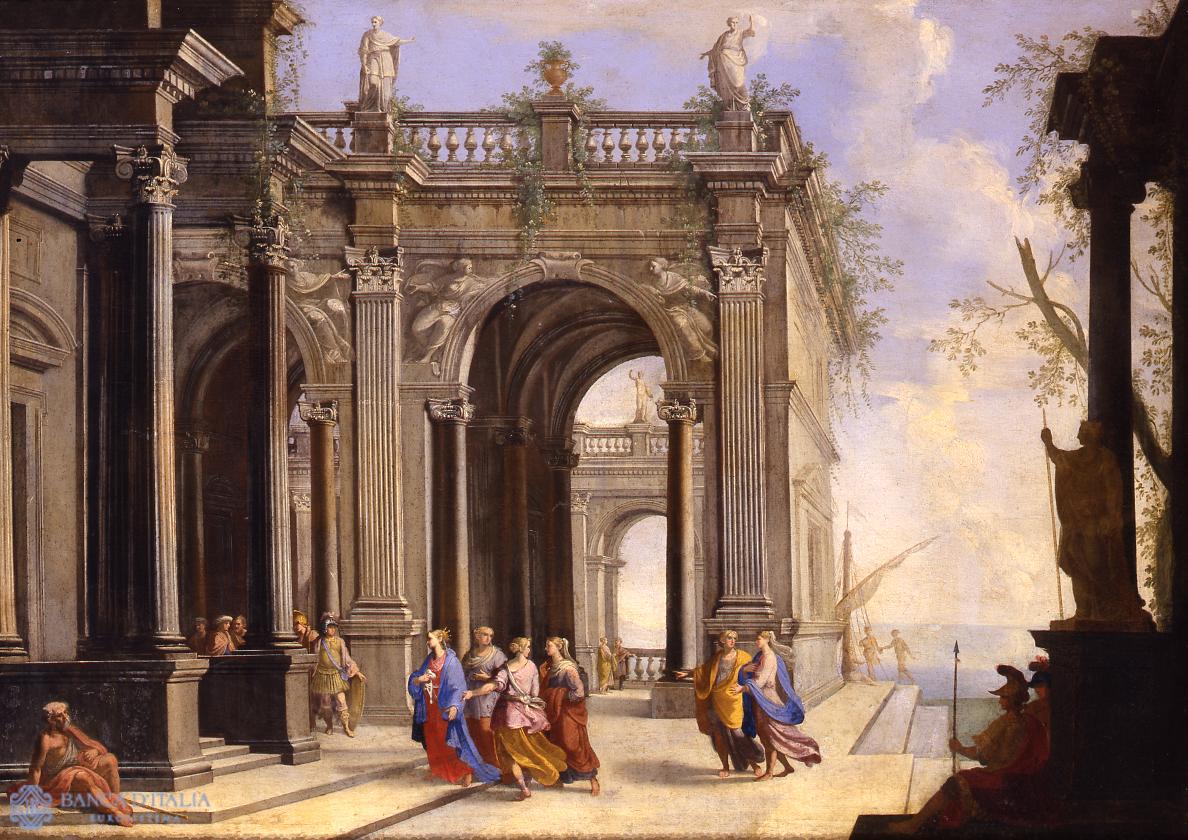
Esther Brought to the Palace of Ahasuerus
The painting was conceived as a pair with Meeting of Solomon and the Queen of Sheba and depicts the end of the story of Esther narrated in the Old Testament Book of Esther. The Jewish people were persecuted under an edict issued by Haman, the wicked counsellor of the Persian king Ahasuerus.
Painting
17th century AD
Biblical - Historical - Mythologic

Paesaggio con pastori e armenti
The painting is attributed to Crescenzio Onofri and dated towards the close of the seventeenth century. The gentle landscape, framed by trees and animated by small figures and animals, develops on several planes.
Painting
17th century AD
Landscape

The Courtyard of Palazzo Nardini in Rome
The painting depicts in accurate detail the courtyard of this well-known palace in Via del Governo Vecchio in Rome. The building, which is easily identifiable by the loggia with octagonal pillars, was built during the papacy of Paul II (1464-1471) for the Milanese cardinal Stefano Nardini, governor of the city of Rome.
Painting
17th century AD
Landscape

